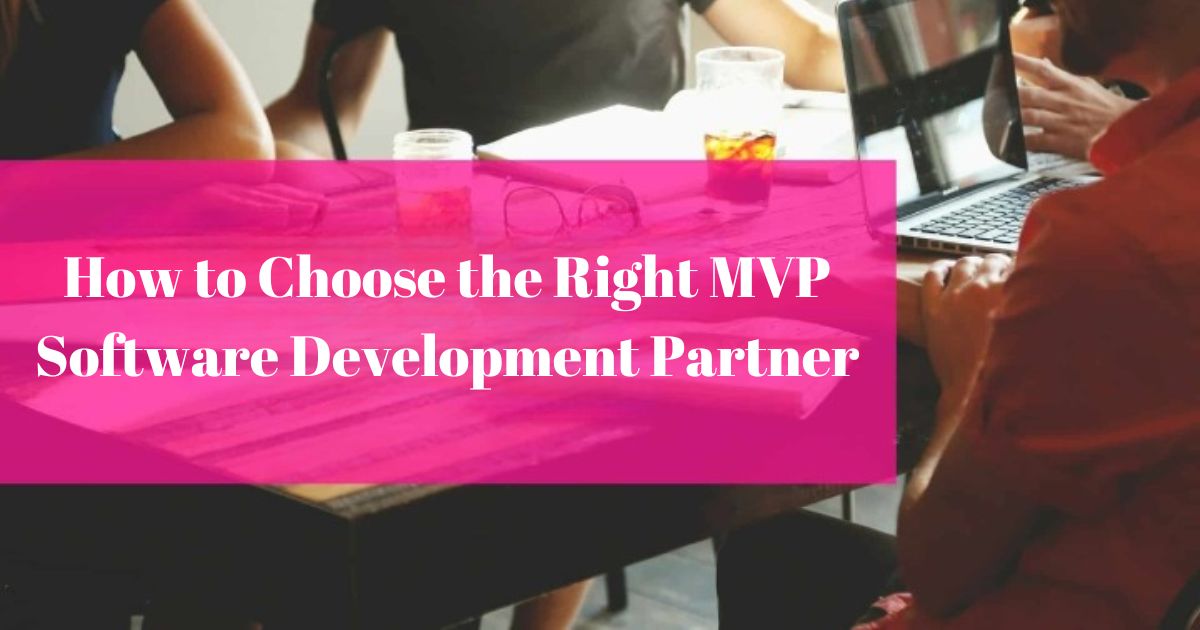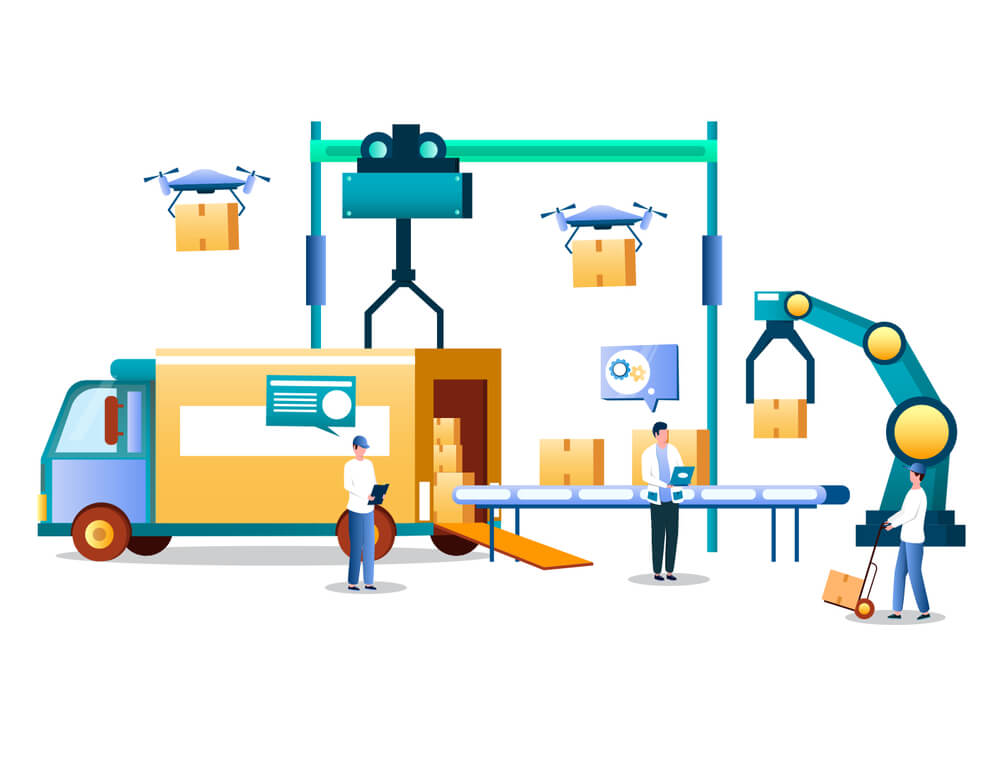Developing a Minimum Viable Product (MVP) is a crucial step in the journey of any startup or established business looking to launch a new product. The MVP serves as the initial version of your product, designed to validate the concept with minimal resources. Choosing the right MVP software development partner is critical to ensuring the success of your project. This comprehensive guide will walk you through the process of selecting the right partner, discussing every important aspect in detail.
Introduction to MVP and Its Importance
What is an MVP?
A Minimum Viable Product (MVP) is a version of a new product that includes only the core features necessary to solve a specific problem for a target audience. It is developed to validate the product idea with real users, allowing businesses to gather feedback and make data-driven decisions before investing in full-scale development.
Why is an MVP Important?
-
Cost Efficiency: Developing an MVP reduces the initial investment by focusing only on essential features, allowing companies to allocate resources more effectively.
-
Market Validation: An MVP allows businesses to test their product in the market and gather valuable feedback, ensuring that there is a demand before committing to full-scale development.
-
Risk Mitigation: By launching an MVP, companies can identify potential issues early, reducing the risk of failure when the full product is released.
-
Faster Time-to-Market: An MVP can be developed quickly, allowing companies to enter the market faster and stay ahead of competitors.
Understanding the Role of an MVP Software Development Partner
What Does an MVP Software Development Partner Do?
An MVP software development partner is a company or team of experts that specializes in turning your product idea into a functional MVP. They are responsible for understanding your vision, designing and developing the MVP, and ensuring it meets your business objectives. The right partner will guide you through the entire process, from ideation to launch.
Key Responsibilities of an MVP Software Development Partner
-
Requirement Analysis: Understanding the business objectives and user needs to define the scope of the MVP.
-
Technical Consultation: Providing insights on the best technologies and platforms to use for the MVP.
-
Design and Development: Creating a user-friendly design and developing the core features of the MVP.
-
Quality Assurance: Ensuring the MVP is free of bugs and meets the quality standards.
-
Launch and Support: Assisting with the launch of the MVP and providing ongoing support.
Steps to Choose the Right MVP Software Development Partner
1. Define Your Goals and Requirements
Understand Your Product Vision
Before you start looking for a development partner, it’s crucial to have a clear understanding of your product vision. What problem does your product solve? Who is your target audience? What are the key features you want in the MVP? Having a well-defined vision will help you communicate your requirements effectively to potential partners.
Set Clear Objectives
Define what you want to achieve with your MVP. Are you looking to validate a new idea, attract investors, or enter a new market? Setting clear objectives will help you measure the success of the MVP and guide your development partner in the right direction.
Identify Technical Requirements
Determine the technical aspects of your MVP, such as the preferred programming languages, platforms (web, mobile, etc.), and integrations. This will help you narrow down your search to partners who have the relevant expertise.
2. Research and Shortlist Potential Partners
Look for Experience in MVP Development
Experience is a critical factor when choosing an MVP development partner. Look for companies that have a proven track record in developing MVPs. Check their portfolio to see the types of projects they have worked on and the industries they have served. This will give you an idea of their expertise and ability to deliver a successful MVP.
Evaluate Technical Expertise
Your MVP development partner should have strong technical expertise in the technologies you plan to use. Whether it’s front-end development, back-end development, or mobile app development, ensure that the partner has a team of skilled developers who can bring your vision to life.
Consider Industry Knowledge
Industry knowledge can be a significant advantage. A partner who understands the nuances of your industry will be better equipped to address specific challenges and provide insights that can enhance your MVP. Look for partners who have experience in your industry or have worked on similar projects.
Check Client Reviews and Testimonials
Client reviews and testimonials provide valuable insights into the partner’s reliability, quality of work, and customer service. Look for reviews on third-party platforms, such as Clutch or Google, and ask for references from the partner. Speaking to past clients can give you a better understanding of what to expect.
3. Assess Communication and Collaboration
Importance of Effective Communication
Effective communication is essential for the success of any project, especially when working with an external partner. Your MVP development partner should be able to communicate clearly and regularly, providing updates on the project’s progress and addressing any concerns promptly.
Evaluate Communication Channels
Consider the communication channels the partner uses. Do they use tools like Slack, Zoom, or Trello for project management and communication? Ensure that they are open to using the communication tools you prefer and that there is a clear plan for regular updates and meetings.
Cultural Fit and Collaboration Style
Cultural fit is often overlooked but is crucial for a successful partnership. Ensure that the partner’s work culture aligns with your company’s values and that their collaboration style complements your team’s. A good cultural fit will lead to smoother communication and better collaboration.
4. Review the Development Process
Understanding the Development Methodology
Different development partners use different methodologies, such as Agile, Scrum, or Waterfall. Understanding the partner’s development process is essential to ensure that it aligns with your project requirements. Agile, for example, is often preferred for MVP development due to its flexibility and focus on iterative development.
Importance of Prototyping and Wireframing
Prototyping and wireframing are critical steps in the MVP development process. They provide a visual representation of the product and help in refining the user experience before development begins. Ensure that your partner emphasizes these steps and involves you in the process.
Quality Assurance and Testing
Quality assurance (QA) is vital to ensure that the MVP is functional and free of bugs. Ask about the partner’s QA process and the types of testing they perform, such as unit testing, integration testing, and user acceptance testing (UAT). A thorough QA process will minimize the risk of issues post-launch.
5. Evaluate Costs and Budget
Understanding Pricing Models
Different development partners offer different pricing models, such as fixed-price, time and materials, or dedicated team models. Understanding these models will help you choose the one that best fits your budget and project requirements.
-
Fixed-Price Model: Best for well-defined projects with a clear scope and timeline.
-
Time and Materials Model: Ideal for projects with evolving requirements, as you pay for the time and resources used.
-
Dedicated Team Model: Suitable for long-term projects where you need a dedicated team working exclusively on your project.
Balancing Cost and Quality
While cost is an important factor, it should not be the sole determinant. A cheaper partner may compromise on quality, leading to a subpar MVP that fails to meet your objectives. It’s essential to find a balance between cost and quality, ensuring that you get the best value for your investment.
Consider Hidden Costs
When evaluating costs, consider potential hidden costs such as maintenance, support, and additional features. Ask the partner about their policy on post-launch support and how they handle changes in scope during development. This will help you avoid unexpected expenses later on.
6. Review Contracts and Legal Aspects
Importance of a Detailed Contract
A detailed contract is essential to protect both parties and ensure a smooth project execution. The contract should outline the scope of work, timelines, deliverables, payment terms, and any other relevant details. Review the contract carefully and ensure that it covers all aspects of the project.
Intellectual Property Rights
Intellectual property (IP) rights are a critical consideration in software development. Ensure that the contract clearly states that you will own the IP rights to the MVP and any associated assets. This will prevent any disputes over ownership in the future.
Confidentiality and Non-Disclosure Agreements
Confidentiality is crucial, especially when developing a new product. Ensure that the partner is willing to sign a Non-Disclosure Agreement (NDA) to protect your sensitive information. The NDA should cover all stages of the project, from initial discussions to post-launch support.
7. Consider Post-Launch Support and Maintenance
Importance of Ongoing Support
The launch of an MVP is just the beginning. Post-launch support is essential to address any issues that arise, make improvements based on user feedback, and ensure the continued success of the product. Choose a partner who offers reliable ongoing support and maintenance services.
Maintenance and Updates
As your product evolves, it will require updates and maintenance. Ensure that the partner has the capability to provide these services and that there is a clear plan for handling updates and bug fixes post-launch.
Scalability and Future Development
Your MVP is likely to grow and evolve based on market feedback. Choose a partner who can support the future development of your product, whether it’s adding new features, scaling the product, or pivoting based on new insights.
8. Making the Final Decision
Comparing Potential Partners
After researching and evaluating potential partners, compare them based on the criteria discussed above. Consider factors such as experience, technical expertise, communication, development process, cost, and post-launch support. Create a weighted scoring system if necessary to objectively compare each partner.
Conducting Interviews and Discussions
Conduct interviews or discussions with the shortlisted partners to get a better sense of their capabilities and how well they understand your project. Use this opportunity to clarify any doubts, discuss the project in detail, and assess the partner’s enthusiasm for your project.
9. Understanding the Development Team’s Structure
Key Roles in an MVP Development Team
An effective MVP development team typically includes several key roles, each contributing to the project’s success:
-
Project Manager: Oversees the project, ensuring that it stays on track and meets deadlines.
-
Business Analyst: Gathers and analyzes requirements to ensure that the MVP aligns with business goals.
-
UI/UX Designer: Designs the user interface and experience, focusing on creating an intuitive and engaging product.
-
Front-End Developer: Handles the client-side development, ensuring the MVP is responsive and user-friendly.
-
Back-End Developer: Manages server-side development, including databases, APIs, and server logic.
-
QA Tester: Conducts testing to identify and fix bugs, ensuring that the MVP meets quality standards.
Importance of a Well-Balanced Team
A well-balanced team with the right mix of skills is essential for the success of your MVP. Ensure that the development partner has the expertise needed for each role and that they can allocate the right resources to your project. A diverse team with experience in various aspects of development will contribute to a more robust and effective MVP.
10. Evaluating the Partner’s Portfolio and Case Studies
Analyzing Previous Projects
Reviewing the partner’s portfolio and case studies provides insight into their capabilities and experience. Look for projects similar to yours in terms of industry, technology stack, and complexity. Analyze the quality of their work, the outcomes achieved, and how well they addressed client needs.
Assessing Success Stories
Success stories and case studies can offer valuable information about how the partner has helped other clients achieve their goals. Look for details on how the partner tackled challenges, the results they delivered, and any testimonials from satisfied clients. This can help you gauge their ability to handle your project effectively.
11. Understanding the Partner’s Approach to Innovation and Emerging Technologies
Staying Updated with Technology Trends
Technology is constantly evolving, and it’s important that your MVP development partner stays up-to-date with the latest trends and technologies. Evaluate the partner’s approach to innovation and their ability to integrate emerging technologies that could enhance your MVP.
Embracing New Technologies
Consider whether the partner is open to experimenting with new technologies or methodologies that could benefit your project. For example, advancements in artificial intelligence, machine learning, or blockchain could potentially add value to your MVP. A partner with a forward-thinking approach will be better equipped to leverage these technologies for your benefit.
12. Assessing the Partner’s Problem-Solving Skills
Handling Challenges and Changes
The development process often involves unexpected challenges and changes in scope. Assess the partner’s problem-solving skills and their ability to handle such situations effectively. Look for partners who are adaptable and proactive in addressing issues, ensuring that they can keep your project on track.
Flexibility and Adaptability
The ability to adapt to changing requirements and feedback is crucial for MVP development. Choose a partner who is flexible and willing to make adjustments as needed. Their approach to change management will impact how smoothly the project progresses and how well they respond to your evolving needs.
13. Building a Strong Working Relationship
Establishing Clear Communication Channels
Effective communication is the cornerstone of a successful partnership. Establish clear communication channels and ensure that both parties understand the expectations and preferred methods of communication. Regular updates, meetings, and feedback sessions are essential for maintaining alignment throughout the project.
Fostering Collaboration and Trust
A strong working relationship is built on trust and collaboration. Foster a positive relationship with your development partner by being transparent about your goals, providing constructive feedback, and respecting their expertise. A collaborative approach will lead to better outcomes and a more productive partnership.
14. Assessing the Partner’s Long-Term Vision
Alignment with Your Business Goals
Consider how well the development partner’s long-term vision aligns with your business goals. A partner who shares your vision for growth and success will be more invested in the project and more likely to contribute to its long-term success. Discuss your future plans and ensure that the partner is committed to supporting your long-term objectives.
Support for Future Enhancements
Your MVP is just the beginning, and you may need additional features or enhancements as your product evolves. Choose a partner who can support future development and growth. Ensure that they have the capacity and willingness to continue working with you beyond the initial MVP launch.
15. Reviewing the Legal and Ethical Aspects
Compliance with Regulations
Ensure that the development partner complies with relevant regulations and standards, such as data protection laws (e.g., GDPR, CCPA) and industry-specific regulations. Compliance is crucial for avoiding legal issues and ensuring that your MVP meets all necessary requirements.
Ethical Considerations
Evaluate the partner’s ethical standards and business practices. Ensure that they adhere to industry best practices and maintain high standards of integrity. An ethical partner will conduct business fairly and transparently, contributing to a positive and trustworthy working relationship.
Conclusion
Choosing the right MVP software development partner involves careful consideration of various factors, including experience, technical expertise, communication, cost, and post-launch support. By following the steps outlined in this guide, you can make an informed decision and select a partner who will help you successfully develop and launch your MVP.
A well-chosen development partner will not only bring your product vision to life but also contribute to its long-term success. Take the time to thoroughly evaluate potential partners, assess their capabilities, and establish a strong working relationship. With the right partner by your side, you can navigate the challenges of MVP development and achieve your business goals with confidence.




